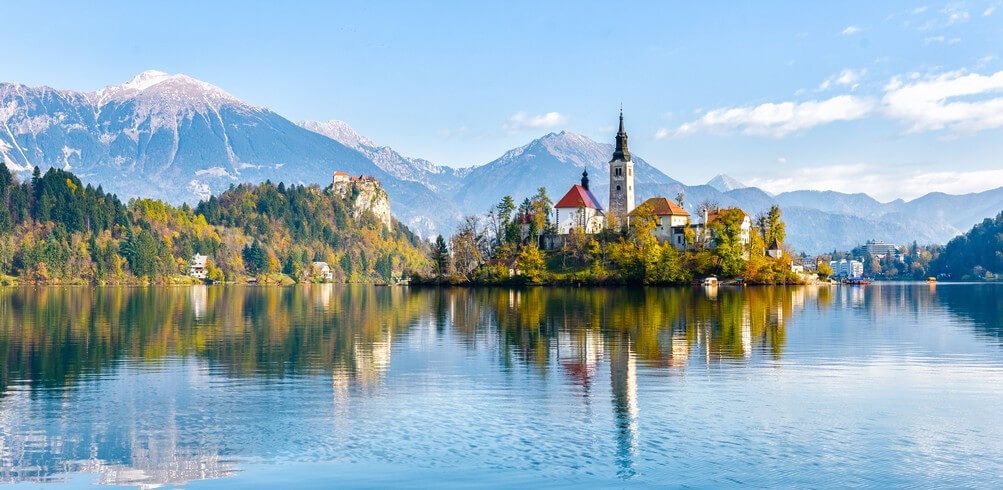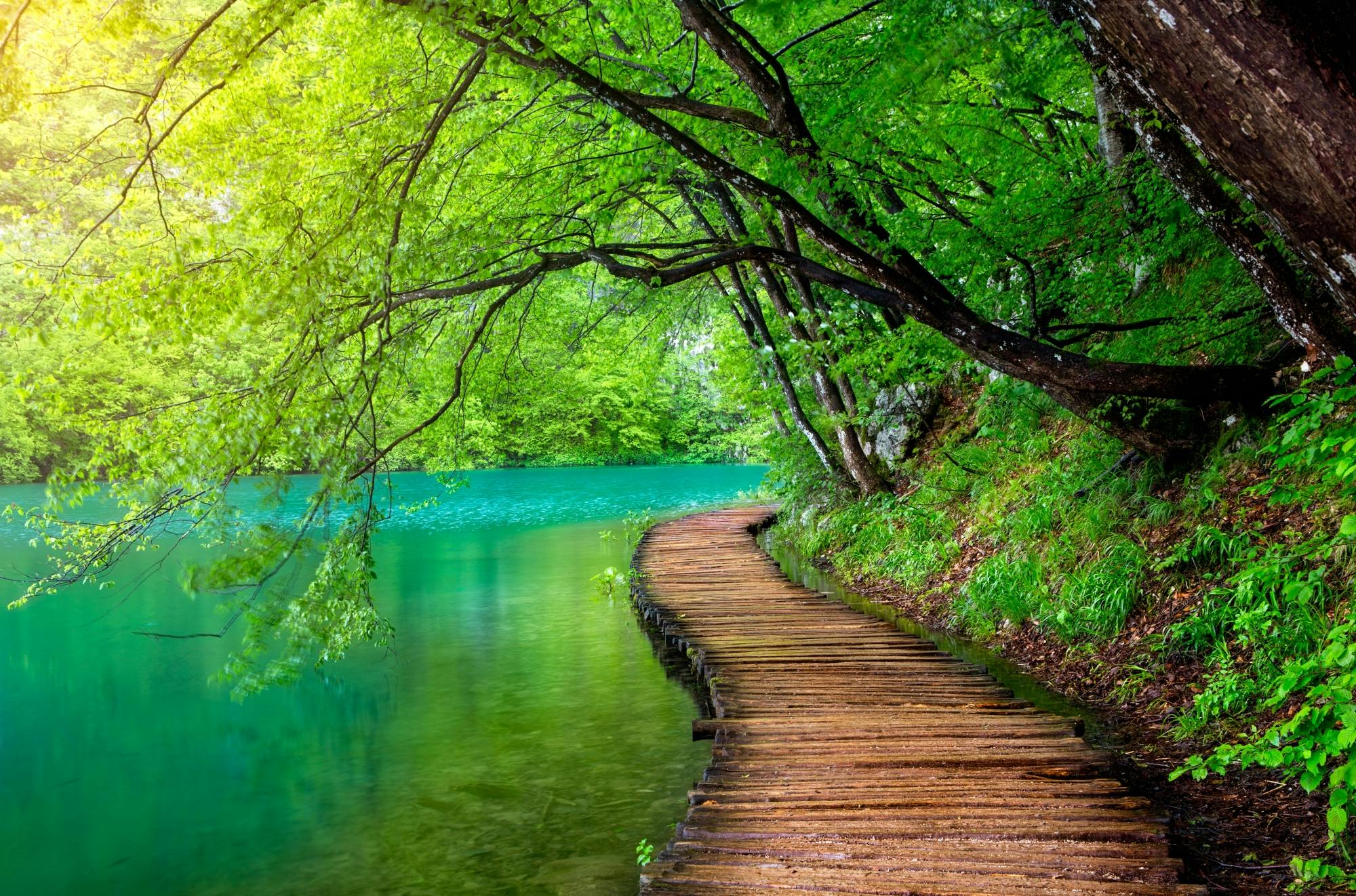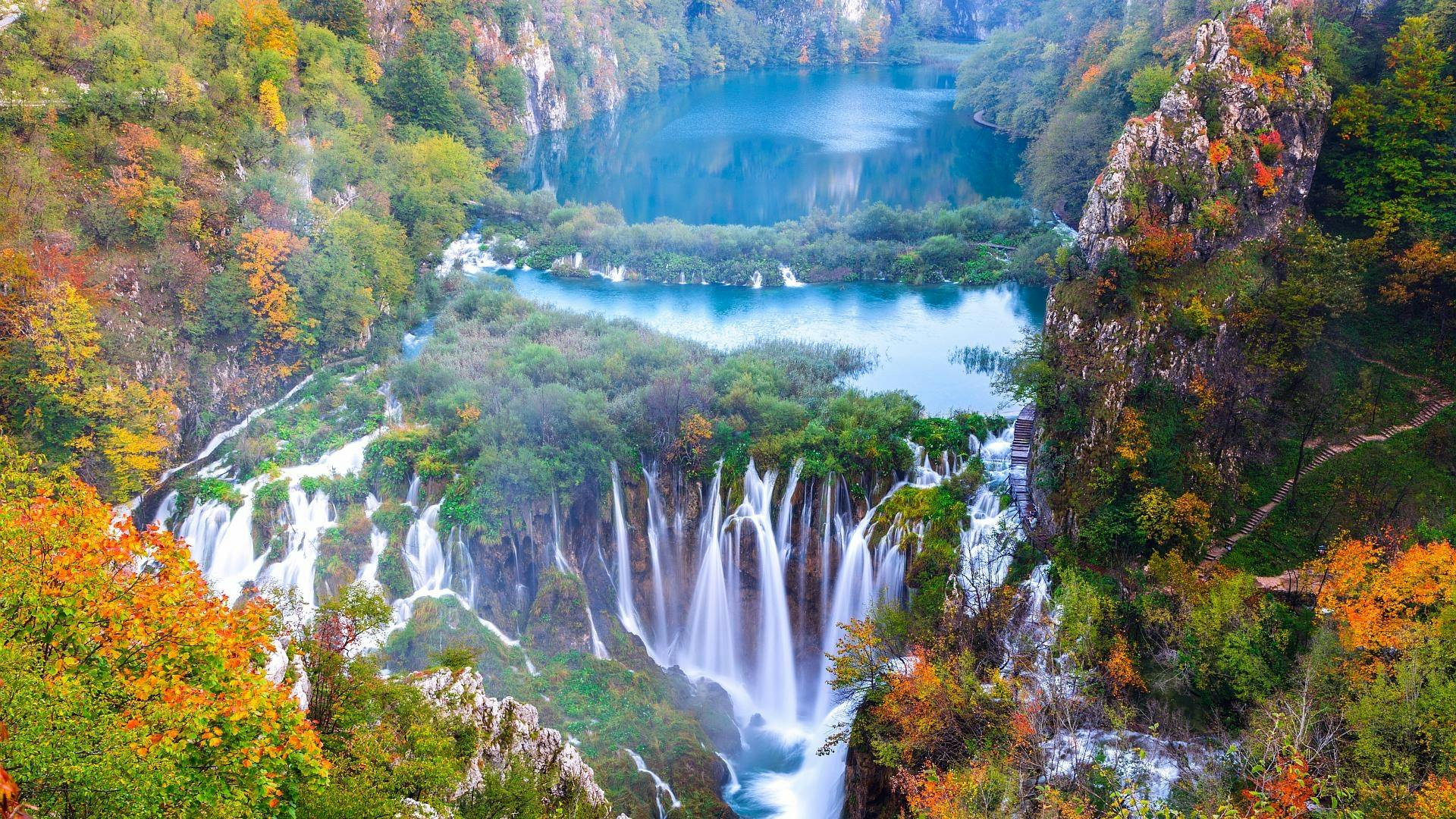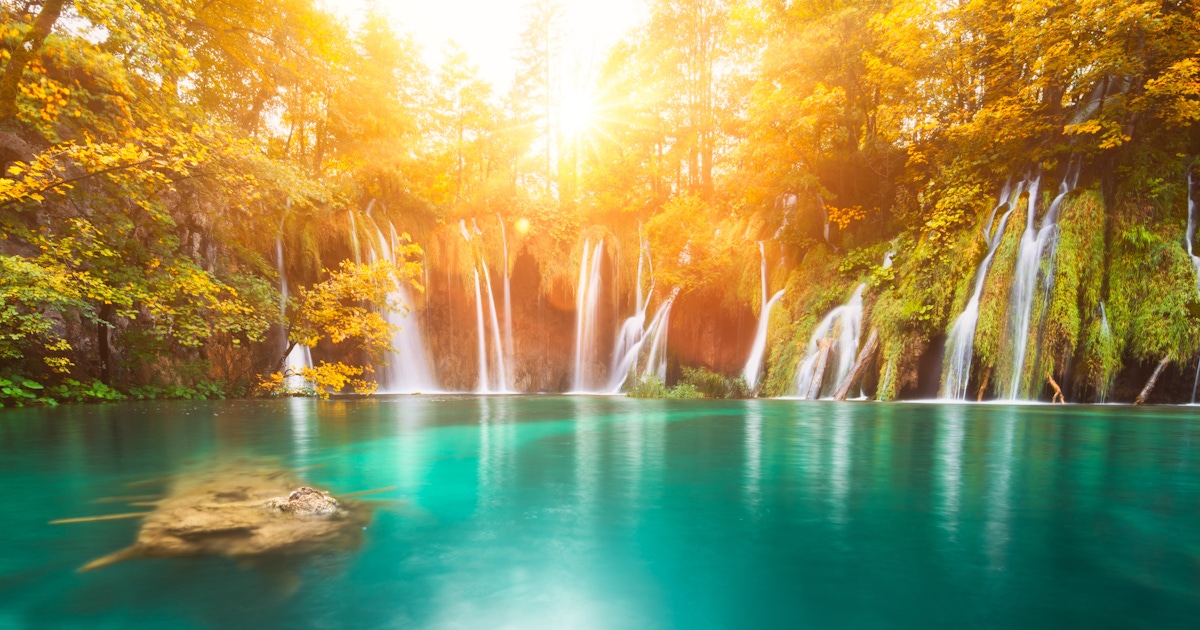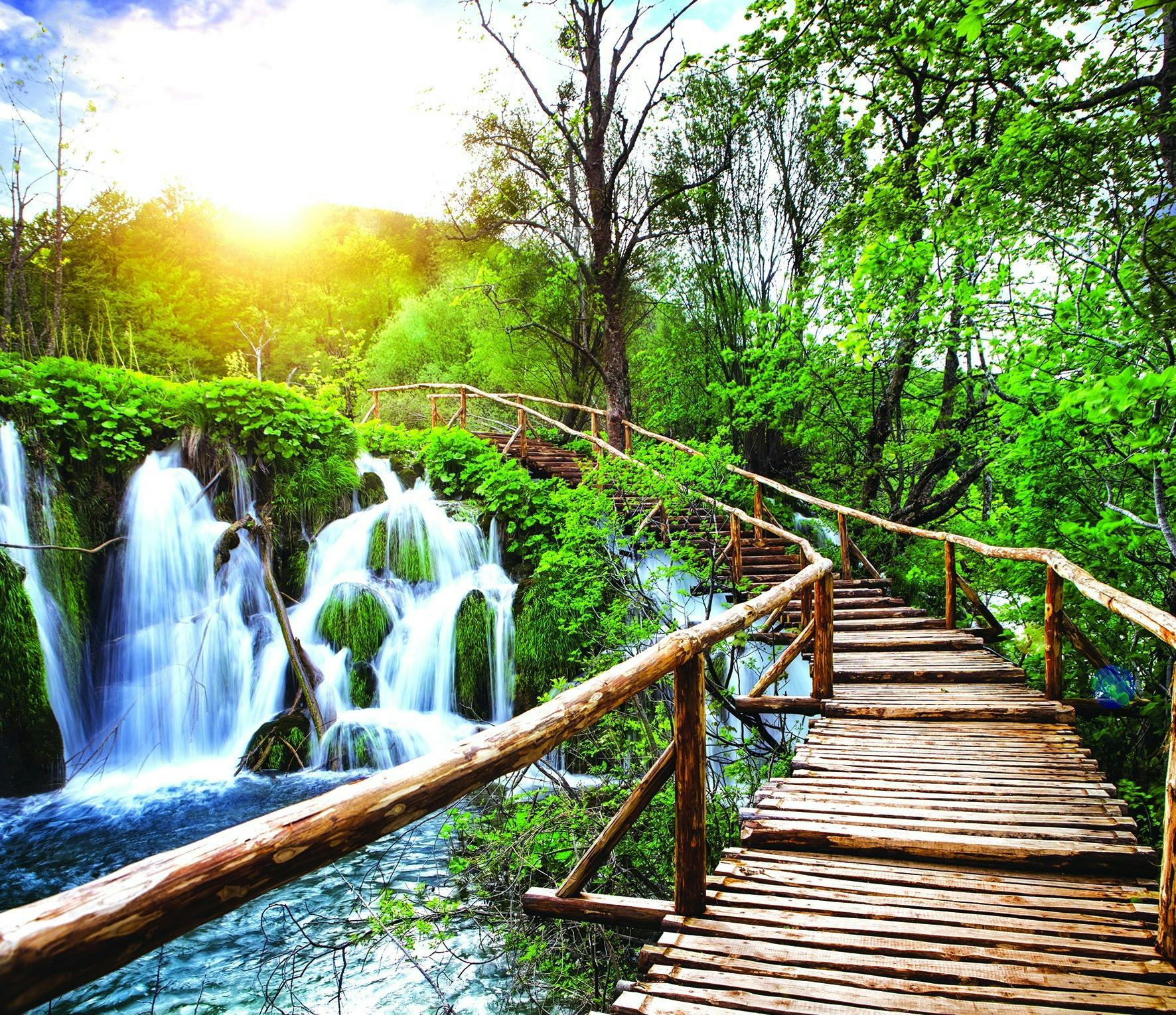In the heart of Croatia, Plitvice Lakes National Park is a breathtaking landscape of cascading waterfalls, serene lakes, and lush greenery. This UNESCO World Heritage Site is renowned for its vivid turquoise waters, verdant forests, and enchanting wildlife. For nature lovers, photographers, and adventurers alike, Plitvice Lakes is a must-visit destination that will leave you spellbound.
Location and Getting There
Plitvice Lakes National Park is located in central Croatia, between the cities of Zagreb and Zadar. It’s roughly a 2-hour drive from Zagreb and a 1.5-hour drive from Zadar, making it an ideal day trip from either city.
- By Car: Driving is one of the easiest ways to reach Plitvice Lakes. Both Zagreb and Zadar offer car rental options, and the drive is scenic and straightforward. Parking is available near the entrance of the park.
- By Bus: There are regular bus services from both Zagreb and Zadar to the park. The journey typically takes between 2 to 3 hours. The bus stops directly at the park’s entrance, so it’s a convenient option for those without a car.
- By Guided Tour: Many guided tours from nearby cities offer packages that include transportation, entrance fees, and a knowledgeable guide. This can be an excellent option if you want a hassle-free experience.
Nearby Attractions
While Plitvice Lakes is undoubtedly the star attraction, there are several nearby spots worth exploring:
- Rastoke Village: Known as the “Small Lakes of Plitvice,” Rastoke is a charming village located about 30 minutes from the park. It features waterfalls, traditional watermills, and houses built on the water. It’s an idyllic spot to unwind and soak in the serene surroundings.
- Barac Caves: Approximately 20 minutes from the park, these caves offer a glimpse into Croatia’s fascinating underground world. Guided tours reveal ancient stalactites, stalagmites, and traces of early human history.
- Una National Park (Bosnia and Herzegovina): Just across the border, this national park features its own impressive waterfalls, like Štrbački Buk, which are well worth a visit if you have more time.
Things to Do at Plitvice Lakes National Park
Plitvice Lakes National Park is divided into the Upper and Lower Lakes, each offering unique landscapes and activities. Here are some of the top things to do:
1. Explore the Wooden Walkways
Plitvice Lakes is famous for its wooden boardwalks that wind through the park, allowing visitors to walk alongside and even over the stunning turquoise waters. These walkways offer up-close views of the waterfalls and the chance to spot fish and other wildlife.
2. Take a Boat Ride
The park includes an electric boat service that transports visitors across Lake Kozjak, the largest lake in the park. This peaceful ride allows you to relax and enjoy the scenery from a unique perspective.
3. Hiking Trails
With several trails ranging from easy to challenging, there’s a route for everyone. Choose a trail based on your fitness level and the time you have available. The longest trail (Trail K) covers both the Upper and Lower Lakes and takes about 6 to 8 hours to complete.
4. Ride the Panorama Train
A scenic electric train operates in the park, offering an eco-friendly way to travel between points. This is a great option if you want to conserve energy for exploring the lakes and waterfalls.
5. Photography
Every corner of Plitvice Lakes offers a photo opportunity, from vibrant emerald waters to lush green landscapes and dramatic waterfalls. Sunrise and sunset are especially magical times for capturing the beauty of the park.
6. Bird and Wildlife Watching
Plitvice Lakes is home to diverse wildlife, including deer, wild boar, and various bird species. If you’re lucky, you might even spot some of the park’s rarer inhabitants, like the European brown bear or lynx.
FAQs About Plitvice Lakes National Park
1. What is the best time to visit Plitvice Lakes?
- Spring (April – June) and fall (September – October) are ideal for visiting as the weather is mild, the crowds are smaller, and the water levels are higher, making the waterfalls more impressive. Summer can be crowded, while winter offers a unique snowy landscape but limited access to some areas.
2. How much is the entrance fee?
- Entrance fees vary depending on the season. Peak season (June-August) tickets cost around €40, while prices drop significantly in the off-season. Children and students are eligible for discounts.
3. Can you swim in Plitvice Lakes?
- No, swimming is not permitted in Plitvice Lakes to protect the delicate ecosystem. However, nearby places like Krka National Park allow swimming, so you can enjoy the water there.
4. Are there food options inside the park?
- Yes, there are a few restaurants and snack bars within the park. However, bringing your own snacks and water is recommended, especially if you plan to spend the entire day exploring.
5. What should I wear and bring?
- Comfortable, sturdy shoes are a must, as you’ll be walking on uneven surfaces. A lightweight, waterproof jacket, sunscreen, and a hat are also recommended. Don’t forget your camera, as Plitvice Lakes is extremely photogenic!
6. How long does it take to explore the park?
- You can see the main highlights in a half-day, but a full day allows you to explore at a more leisurely pace. If you want to experience the Upper and Lower Lakes, plan for a full day.
7. Is the park accessible for people with mobility issues?
- The park’s rugged terrain and wooden walkways may be challenging for visitors with mobility issues. However, there are limited accessible paths. It’s best to contact the park in advance for specific advice.
Conclusion
Plitvice Lakes National Park is a slice of paradise that captivates visitors with its dramatic landscapes, crystal-clear waters, and enchanting wildlife. Whether you’re looking to hike through lush forests, marvel at waterfalls, or simply bask in nature’s beauty, Plitvice Lakes offers an unforgettable experience. Plan your trip carefully, take your time exploring, and let the magic of Plitvice leave you with memories to cherish for a lifetime.
